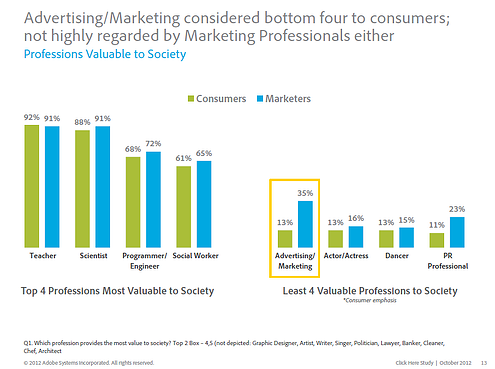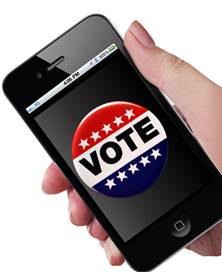 Black Friday, Cyber Monday, Tech Tuesday… the offers keep rolling in, and this year, I cracked. Yes, I still love you LL Bean, Lands’ End, Williams Sonoma, and Wal-mart. But I can’t take your daily barrage anymore; it’s time to purge.Despite my innate skepticism—no matter what you do or say, you can’t get off a mailing list–I forged ahead to try to staunch some of the flow. I mean, if I am spending even 10 seconds on each of the 100-odd commercial emails I get a day, couldn’t I find a better use of my time, like baking cookies? Not to mention, I remember reading somewhere about how much energy an email takes to generate, send and store, etc. So really this was a green effort on my part.
Black Friday, Cyber Monday, Tech Tuesday… the offers keep rolling in, and this year, I cracked. Yes, I still love you LL Bean, Lands’ End, Williams Sonoma, and Wal-mart. But I can’t take your daily barrage anymore; it’s time to purge.Despite my innate skepticism—no matter what you do or say, you can’t get off a mailing list–I forged ahead to try to staunch some of the flow. I mean, if I am spending even 10 seconds on each of the 100-odd commercial emails I get a day, couldn’t I find a better use of my time, like baking cookies? Not to mention, I remember reading somewhere about how much energy an email takes to generate, send and store, etc. So really this was a green effort on my part.
But I digress. As I got rolling, I noticed several unsubscribe methods. And it got me thinking about how they—the marketers, should keep contact with me—the consumer, while not annoying me (yes, me over here with the credit card at the ready!). Because, as I mentioned, I still love those guys for the most part.
And so here’s how the world of unsubs breaks down in my recent experience:
The Clean Cut and Run: This is the one I wonder about the outcome of most. While everyone pretty much has to offer the unsubscribe option when they email you, my suspicious side makes me think they are actually validating my email when I click through and unsubscribe. I am, after all, confirming my existence with a live email address. Sometimes you hear back that, “yes, you are off the list now,” while at other times it feels like you’re shouting into the void. The latter situation leaves me with a less than positive feeling.
The Good Bye and Good Luck: This is when they say something like, “Aw shucks! We’ll miss you.” And you feel a moment’s regret, but know in your heart of hearts they will be back someday… well maybe. At least you parted on good terms.
The Really? Good-bye?: They will let you go, but not without a last ditch effort to ask, “Why? How could you do this to me? You’re really are breaking up with me?” And you might, if not doggedly persistent, find yourself caving and not following through on the unsub.
The But wait, there’s more: Here’s where the real genius starts to kick in (or is it just common sense). I click the unsubscribe link, get to a page that says something to the effect of: “OK so how often would you like to get emails from us? Is once a week too much, how about once every two weeks or once a month? Would you be willing to get a quarterly update? You don’t want to never get them, right?” And chances are I don’t want to cut them off completely, but I sincerely do want to de-clutter. So I end up saying, sure, you can keep sending me something once in a great while.
Then there was one with the option to choose a contact timeframe, and the options were:
Multiple times a day
Once a day
2-3 times a week
Once a week
Never
Umm. I have to say “never” wins here. Who is clicking an unsubscribe link only to say, “Yes, please send me emails several times a day?” Fact is, and this is undoubtedly personality driven, if I am going to shop, chances are I already know what I am looking for and I start from Amazon or the retailer’s page directly, not from an advermail. They probably have some offer right there on their home page after all. It’s not as if I truly believe they are only sending me the alert that they have a 10% off + free shipping deal underway… plus there’s always RetailMeNot for a coupon code!
 But I think my favorite unsub result may be when you get an email confirming you just said you didn’t want any more emails. Granted, I really DID need to purge that pizza joint from a trip 2 years ago to DC. I live in Boston and good as it may be, their pizza won’t be delivered all the way up north.
But I think my favorite unsub result may be when you get an email confirming you just said you didn’t want any more emails. Granted, I really DID need to purge that pizza joint from a trip 2 years ago to DC. I live in Boston and good as it may be, their pizza won’t be delivered all the way up north.
So at the risk of dismaying some email marketers with my Scrooge-like email purge, just know I feel fresh and invigorated again now in the anticipation of a clean start to the New Year. Some of you marketers made me feel listened to and heard. And I am grateful for it. Maybe even grateful in a way that reminds me to check you out next time I need a new blender, or a pair of fingerless gloves.
Kate is a Project Director, working with clients across many industries at CMB. She has been known to perform in local musical theater here and there, speaks three languages well and a few others passably, and loves coincidence.
Learn more about why people subscribe to emails (or don't) with our Consumer Pulse: 10 Quick Facts about How and Why Consumers "Like" and Subscribe.




 As a market researcher, there are times I can’t help but look at the upcoming presidential election as the ultimate marketing campaign. A successful political campaign often adapts many of the same strategies used by marketers, and just as savvy marketers have adapted their campaigns to the overwhelming number of Americans who own a mobile device, our candidates have strategically followed suit.Due to the overwhelming and increasing number of voters who own smartphones, it’s easy to see why politicians today are placing so much importance on taking their campaigns mobile. A
As a market researcher, there are times I can’t help but look at the upcoming presidential election as the ultimate marketing campaign. A successful political campaign often adapts many of the same strategies used by marketers, and just as savvy marketers have adapted their campaigns to the overwhelming number of Americans who own a mobile device, our candidates have strategically followed suit.Due to the overwhelming and increasing number of voters who own smartphones, it’s easy to see why politicians today are placing so much importance on taking their campaigns mobile. A 

 Imagine a company whose principle mission is to treat clients fairly, one that operates, not at low-cost but “at-cost,” and is beholden only to its clients—not Wall Street or wealthy shareholders. At a time when a social movement, based largely on deep displeasure with the financial industry, has exploded across the country, these are very attractive attributes.
Imagine a company whose principle mission is to treat clients fairly, one that operates, not at low-cost but “at-cost,” and is beholden only to its clients—not Wall Street or wealthy shareholders. At a time when a social movement, based largely on deep displeasure with the financial industry, has exploded across the country, these are very attractive attributes.